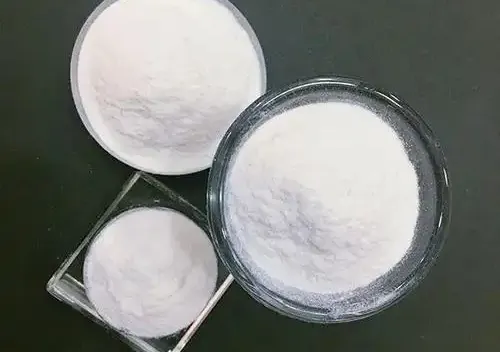
Boosting Strength, Workability, and Efficiency with Modern Solutions
In modern construction, achieving optimal concrete performance is a priority, especially when aiming for high strength, durability, and cost-efficiency.

Understanding the Types of Water Reducing Admixtures
One crucial component in this equation is the water reducing admixture, a chemical additive designed to lower the water content in concrete mixes without compromising workability. These admixtures are categorized into different classes based on their effectiveness and application.
There are generally three types of water reducing admixtures: normal-range, mid-range, and high-range. Normal-range water-reducing admixtures reduce the water content by approximately 5–10% and are typically used for standard construction applications. Mid-range reducers improve workability without excessive slump loss and are useful in applications requiring better finishability. On the higher end, high range water reducer concrete additives can reduce water content by more than 20%, significantly increasing the compressive strength of the concrete.
Among the advanced formulations, polycarboxylates high range water reducer products have revolutionized concrete technology. These high-performance admixtures are based on poly carboxylic ether (PCE) polymers, offering superior water reduction and slump retention, especially useful in precast and high-performance concrete applications. The versatility of polycarboxylate concrete makes it a favorite for complex architectural designs and infrastructure projects.

Benefits and Applications of Water-Reducing Admixtures
The main advantage of using a concrete water reducing admixture lies in its ability to improve the fresh and hardened properties of concrete. By lowering the water-to-cement ratio, these admixtures enhance compressive strength, reduce shrinkage and cracking, and improve surface finish.
A widely used product in this category is the concrete water reducer plasticizer, which not only improves the flowability of the mix but also helps reduce labor costs and construction time. These are especially beneficial in reinforced concrete where congestion of rebar makes compaction difficult. In such scenarios, water-reducing admixtures ensure uniform placement and prevent honeycombing.
Modern construction projects also rely on environmentally friendly and high-efficiency admixtures. Polycarboxylate concrete, utilizing advanced polymer chemistry, delivers consistent performance under varying environmental conditions. The polycarboxylates high range water reducer family is particularly well-known for maintaining workability over longer durations, making it ideal for ready-mix applications that require long haul times.
For instance, examples of water-reducing admixtures include lignosulfonates (first-generation), naphthalene sulfonates (second-generation), and poly carboxylic ether based admixtures (third-generation). Each of these brings specific advantages to concrete mixes, with PCE-based admixtures being the most effective and widely adopted in today’s market.
Selecting the Right Concrete Water Reducer
Choosing the appropriate concrete water reducer depends on various factors, including the desired concrete properties, environmental conditions, and project requirements. For example, in projects demanding high early strength, a high range water reducer concrete product is ideal. In contrast, for general construction with moderate strength requirements, a mid-range concrete water reducing admixture may suffice.
Contractors and engineers must consider compatibility with cement types, dosages, and setting times when selecting a water reducing admixture. It's also essential to consult with suppliers to ensure the chosen admixture meets local standards and project-specific goals.
In conclusion, leveraging the power of water-reducing admixtures can significantly elevate the performance and longevity of concrete structures. With advancements in chemical engineering, products such as polycarboxylate concrete and concrete water reducer plasticizer continue to lead the way in sustainable and high-performance construction.
FAQs for Concrete Water Reducing Admixtures
FAQ Title: Understanding and Using Water-Reducing Admixtures in Concrete
Q1: What are some common examples of water-reducing admixtures used in concrete?
A1: Common examples include lignosulfonates, sulfonated naphthalene formaldehyde (SNF), sulfonated melamine formaldehyde (SMF), and poly carboxylic ether (PCE). Among these, PCE-based admixtures offer the most advanced performance.
Q2: What is the benefit of using a high range water reducer concrete admixture?
A2: High range water reducers, especially polycarboxylates high range water reducer, significantly reduce water content while improving workability, strength, and setting time. They are ideal for high-performance and precast concrete applications.
Q3: How does a concrete water reducer plasticizer affect the concrete mix?
A3: Plasticizers increase the fluidity of concrete without adding more water, improving flow and compaction, especially in dense or reinforced structures. This leads to fewer voids and enhanced durability.
Q4: Can I use polycarboxylate concrete for hot weather concreting?
A4: Yes. Polycarboxylate concrete admixtures provide excellent slump retention and delayed setting properties, making them highly suitable for use in hot climates or for long-distance transport of ready-mix concrete.
Q5: Are مواد مضافة لتخفيض الماء safe for all types of cement?
A5: Most مواد مضافة لتخفيض الماء are compatible with standard cement types, but it's crucial to conduct compatibility tests before use. Factors like cement composition, mix design, and ambient temperature can affect performance.
-
Hydroxypropyl Starch as a Sustainable Construction AdditiveNewsNov.24,2025
-
The Gelation Properties of CMCNewsNov.21,2025
-
Redispersible Latex Powder and Water Retention CapacityNewsNov.21,2025
-
Dosage Control for Polycarboxylate Water ReducerNewsNov.21,2025
-
Film-Forming Properties of Polyvinyl AlcoholNewsNov.21,2025
-
The Function of Gypsum Additives in MortarNewsNov.21,2025





















